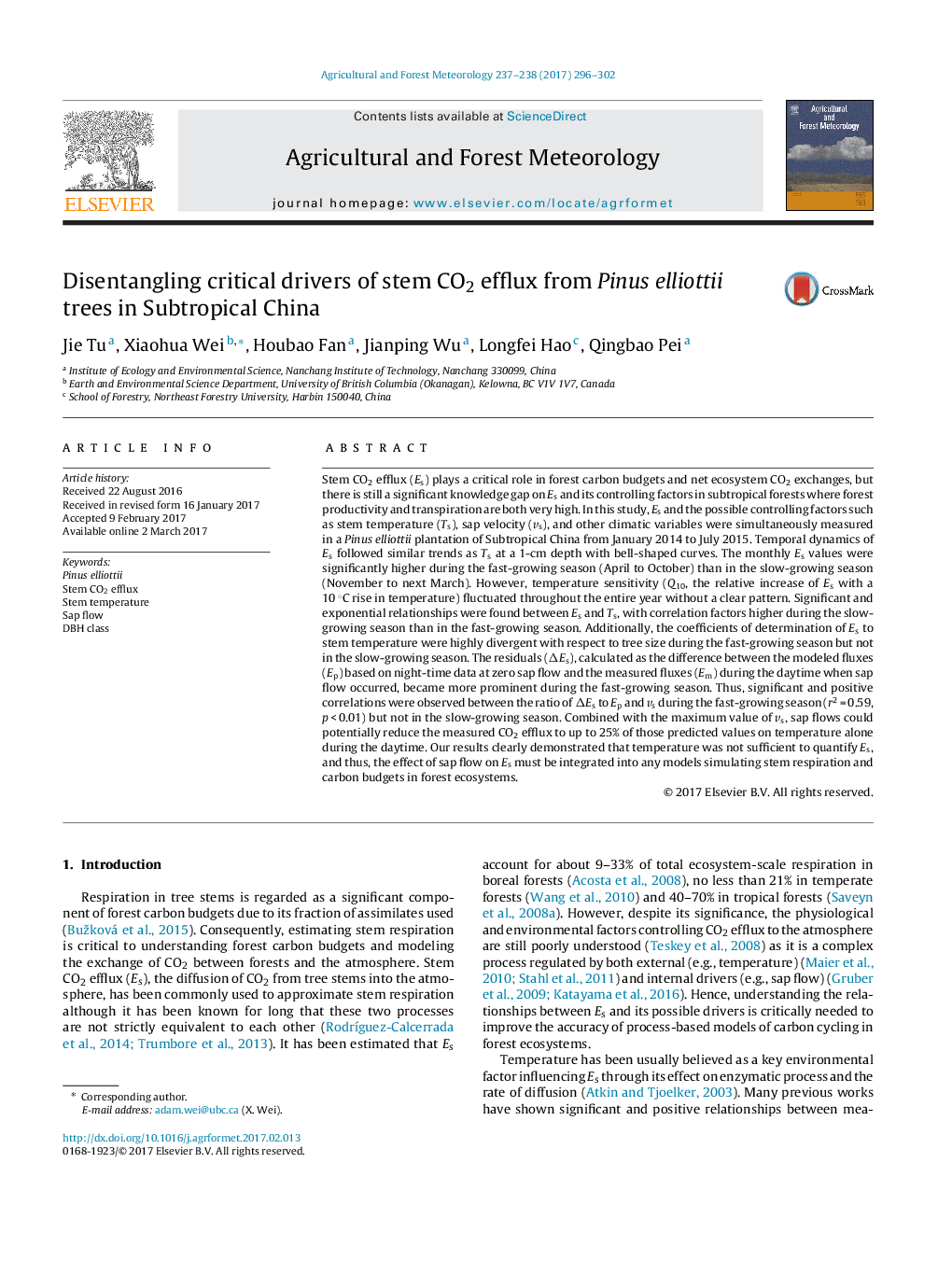| کد مقاله | کد نشریه | سال انتشار | مقاله انگلیسی | نسخه تمام متن |
|---|---|---|---|---|
| 6457935 | 1420861 | 2017 | 7 صفحه PDF | دانلود رایگان |

- Stem temperature is a key factor controlling stem respiration.
- Stem respiration rates are varied with seasons and stem diameters.
- Sap flow is an important factor for influencing stem respiration.
- Both stem temperature and sap flow should be considered in any models predicting stem respiration and carbon budgets in forest ecosystems.
Stem CO2 efflux (Es) plays a critical role in forest carbon budgets and net ecosystem CO2 exchanges, but there is still a significant knowledge gap on Es and its controlling factors in subtropical forests where forest productivity and transpiration are both very high. In this study, Es and the possible controlling factors such as stem temperature (Ts), sap velocity (vs), and other climatic variables were simultaneously measured in a Pinus elliottii plantation of Subtropical China from January 2014 to July 2015. Temporal dynamics of Es followed similar trends as Ts at a 1-cm depth with bell-shaped curves. The monthly Es values were significantly higher during the fast-growing season (April to October) than in the slow-growing season (November to next March). However, temperature sensitivity (Q10, the relative increase of Es with a 10 °C rise in temperature) fluctuated throughout the entire year without a clear pattern. Significant and exponential relationships were found between Es and Ts, with correlation factors higher during the slow-growing season than in the fast-growing season. Additionally, the coefficients of determination of Es to stem temperature were highly divergent with respect to tree size during the fast-growing season but not in the slow-growing season. The residuals (ÎEs), calculated as the difference between the modeled fluxes (Ep) based on night-time data at zero sap flow and the measured fluxes (Em) during the daytime when sap flow occurred, became more prominent during the fast-growing season. Thus, significant and positive correlations were observed between the ratio of ÎEs to Ep and vs during the fast-growing season (r2 = 0.59, p < 0.01) but not in the slow-growing season. Combined with the maximum value of vs, sap flows could potentially reduce the measured CO2 efflux to up to 25% of those predicted values on temperature alone during the daytime. Our results clearly demonstrated that temperature was not sufficient to quantify Es, and thus, the effect of sap flow on Es must be integrated into any models simulating stem respiration and carbon budgets in forest ecosystems.
Journal: Agricultural and Forest Meteorology - Volumes 237â238, 1 May 2017, Pages 296-302